- Joined
- Nov 2, 2008
- Messages
- 21,994
FYI this is also what Trebuchet/Owen is teaching, he's even in one of The Method vids.I won't endorse anyone who teaches the forced back leg twist, let alone the back leg push down, as the source of power.
Discover new ways to elevate your game with the updated DGCourseReview app!
It's entirely free and enhanced with features shaped by user feedback to ensure your best experience on the course. (App Store or Google Play)
FYI this is also what Trebuchet/Owen is teaching, he's even in one of The Method vids.I won't endorse anyone who teaches the forced back leg twist, let alone the back leg push down, as the source of power.
Hey @StupendousMan I was curious about a few things since you have an S&C background if you don't mind doing a "peer review" of what I'm trying to learn. I'm interested in this in general for player development and for a couple personal reasons. I'm also including some bits that come from the sparse data we have on high-level throwers but will keep it de-identified because I was asked to. Thanks for any thoughts/discussion you're willing to haveI can think of other sporting motions where different teaching ideas can sound completely at odds with each other, and both achieve the same outcome in the end. A lot of the time it seems to be athlete dependent and experience dependent. For me, this series did not exactly speak to the way I think about human movement, so it didn't really move the dial for me in a positive way.
Relative to Weissman's strength levels. I can see a certain level of strength being beneficial, but also a very fast point of diminishing returns. I lift for fun these days and am nowhere near as strong as I once was, but I know what movements felt like at each strength level, and I don't really think it would have had any real major impact. Granted my "for fun" strength levels are still relatively strong all things considered, especially compared to the majority of the disc golf population, so maybe I'm just completely oblivious to the benefits they're providing. Taking my mobility work way more seriously on the other hand (more for Olympic lifting than anything), has been a game changer. I noticed in a couple videos recently how much easier it is for me to coil now, etc. Which, is slightly tangential to the topic at hand, but in a way not, because hip rotation is something that is actually much easier and more comfortable for me now than it ever has been in the past, both internally and externally. Meaning, forcing internal rotation in the hip is more doable now for me than ever before, so if it was ever going to be successful for me as a teaching tool, now is the time.

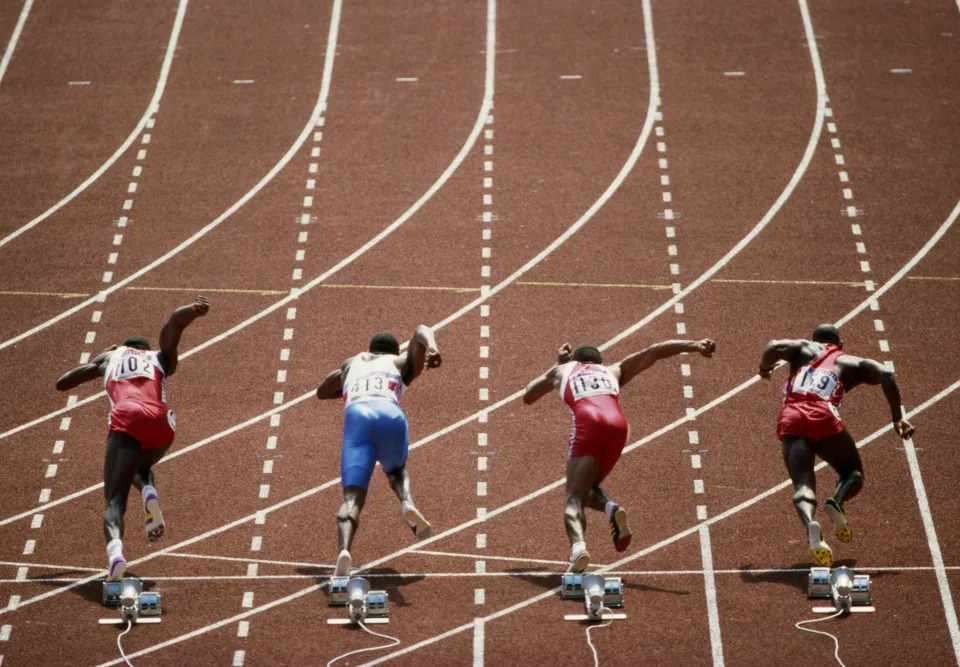
 www.dgcoursereview.com
www.dgcoursereview.com
I haven't seen that from Treb.FYI this is also what Trebuchet/Owen is teaching, he's even in one of The Method vids.
Well, let's chalk that one up to my failing memory or comprehension systems (and probably some "body blindness") and my penance is to look more at booties and load-unload dynamics again. Apologies! I'm glad you're here as always.RE: jon edwards. It's bad form etiquette to thumbs up a post without consuming all of the post's content, B.
The Power of Posture
Forgive me if a repost by title, but I didn't find a dedicated one and it might be good to have a fresh discussion anyway. I keep finding more and more synergies between SW22 DG coaching and the waltz in particular, and thought that a general thread helping people with posture concepts and...www.dgcoursereview.com
RE: strength stuff. At the far eastern ends of athletic skill bell curves, the ability to relax/deactivate/transition/get off that thing is probably a greater delta/skill separator than the inverse. Guarantee that rear leg ground force reaction over time observations are well-correlated with throw disc far, with the high skill end rear leg ground force observations peaking earlier + having a steeper drop. I have no post-second-industrial-revolution-scientific-method data to support this claim, Neil, but you're gonna like the way you look, I guarantee it. Jon Edwards tie-in for this last point: watch how he "creates" most of his ground force reaction while in the air/positions his body to get that sweet sweet early force peak. The rest is almost reactionary/involuntary when one is well set up in the air/prior to ground strike.
 www.dgcoursereview.com
www.dgcoursereview.com

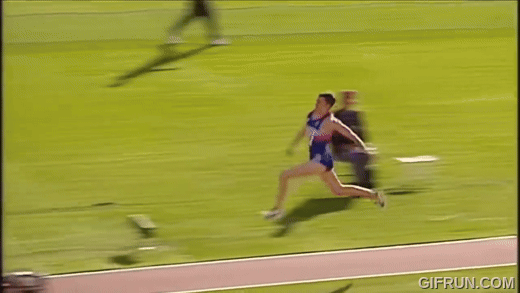

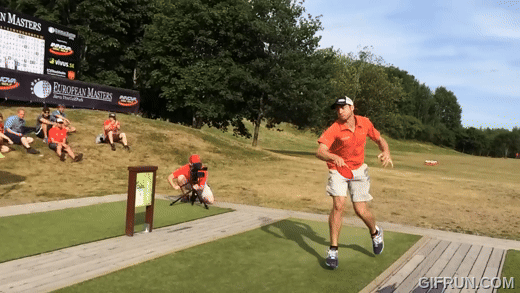
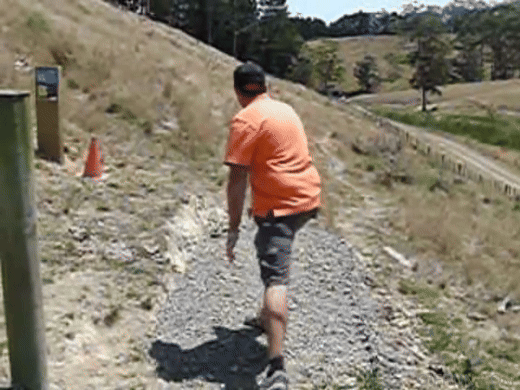
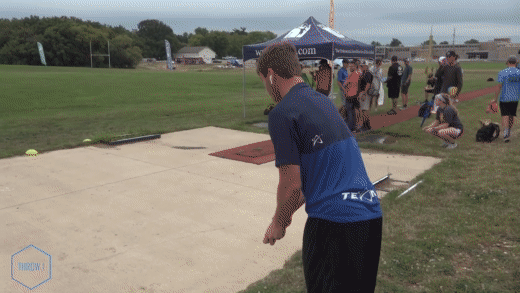
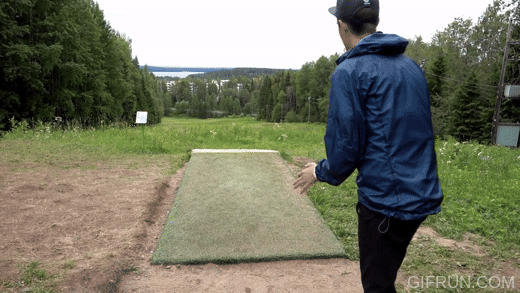
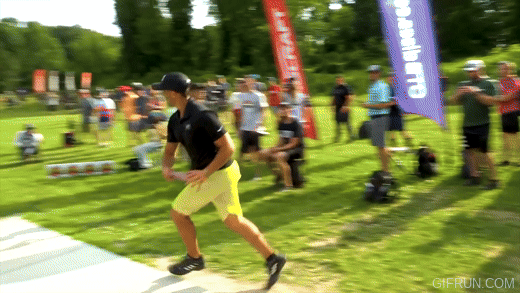
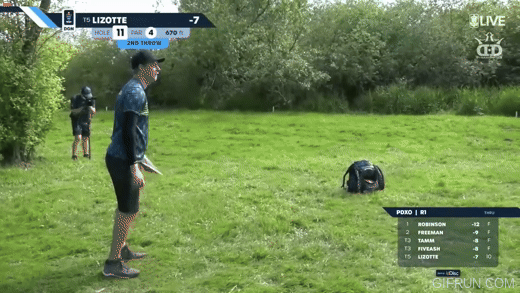

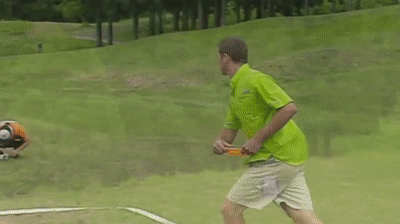



I'll step in on this one because I think you now appreciate that when I talk about this stuff it is never personal and only ever in the spirit of learning, teaching, and resolving differences in concepts or opinions. I like Treb and hope that we would both agree that we are on good speaking terms with each other, and I am always open to critiquing myself.I haven't seen that from Treb.
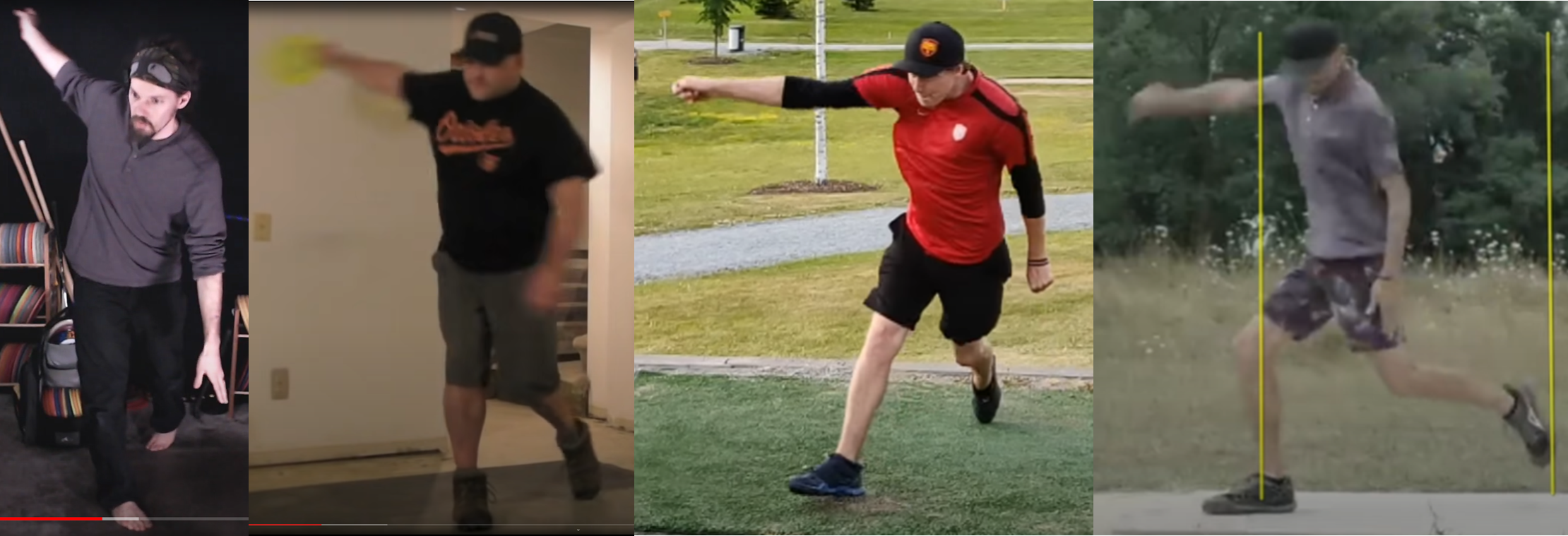
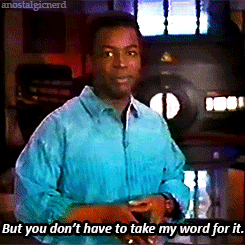

Notice that Treb's feet are both pointing toes pigeon-toed in and his body is tipping away.
It's because:
(1) in his transition form the rear leg, his body mass (and technically theoretical center of mass) is trapped "inside" his rear leg, which (almost?) always causes a player to "spin" more off the rear foot, resulting in the toes turned in and heel farther away from the target and
(2) his balance is "behind" his brace leg rather than stacked fully "on top" of it like hopping up and down on one leg.
That part still confuses me a bit - how do you stand balanced on top, but at the same time be resisting lateral motion? I've done a lot of OLD and I think not understood the "feel" of it though I probably occasionally do it right. Weight moving behind seems to make a little more intuitive sense. Like walking, where your plant leg catches you. Brian's attempt to teach people the feel of the brace is probably a good idea although I'm not sure if the rear leg IR will do it. Sebastian's alternate made more sense to me.
Speaking of which:
Hey man, I think you and I will end up half-agreeing on this point. Please keep in mind I am being conversational and not confrontational in tone and I value our rapport, and any conversation we have about this!We are also comparing dynamic moves done by actually throwing to ones done by showing to the camera while talking. You can't compare them. Trebuchet's teaching, to my knowledge, has nothing to do with twisting the rear knee or pushing down the back foot to throw, which are the fundamentals of BackLeg disc golf I refer to.
Or they used to be. Sling just posted a new video which shows him to be yet another step closer to teaching the brace and stopping the momentum on the front leg and then throwing, which is good.

Sorry, I meant to reply to this too:Or they used to be. Sling just posted a new video which shows him to be yet another step closer to teaching the brace and stopping the momentum on the front leg and then throwing, which is good.
Yes, this is also a fair take in spirit and why I think we (at least) half agree. I'm really not interested in personal "hits" in any way shape or form. I myself am very aware that I will have lifelong limitations in some movements, so I try to be very careful to separate understanding vs. "knowledge." Mostly I just aim to point out that when people see and do different things, there are usually reasons. I think it is up to each person what they really take away from it - I just personally value sharing and "talking it out."I hope my shitty form is never compared to the fundamentals I teach. I mean, I throw that odd 500' or so (given the right disc and a little tailwind and 360 run-up, I could even hit 600') but I would never tell anyone to copy what I do, but what I say. Right? That's what separates coaches from, say, world records holders and multiple time Major champions.
I think in general it's wise not to infer too much from one's own motion alone. Theoretically "ideal" rear leg does kind of a "corkscrew" maneuver as it takes weight and balance on the rear side, but you shouldn't have to intentionally corkscrew the leg in real time. It should ideally work as a unit with the body's posture in transition. Speaking of being a bit careful relative to one's own throws: this is a case I'm bringing up just because I can't do it completely on my rear leg side, but some version of that is true in advanced movement.
Good read on McBeth IMHO. Now go back and watch Weissman's posture and balance over the rear leg, and figure out why his legs move like that into the shift and why his shoulder and elbow take the trajectory they do. Hint - it involves where his balance is (or isn't) in transition.



I also agree with Jaani here, but wanted to take you (Brychanus) up, trying to find something out about Weissmans move.I hope my shitty form is never compared to the fundamentals I teach. I mean, I throw that odd 500' or so (given the right disc and a little tailwind and 360 run-up, I could even hit 600') but I would never tell anyone to copy what I do, but what I say. Right? That's what separates coaches from, say, world records holders and multiple time Major champions.